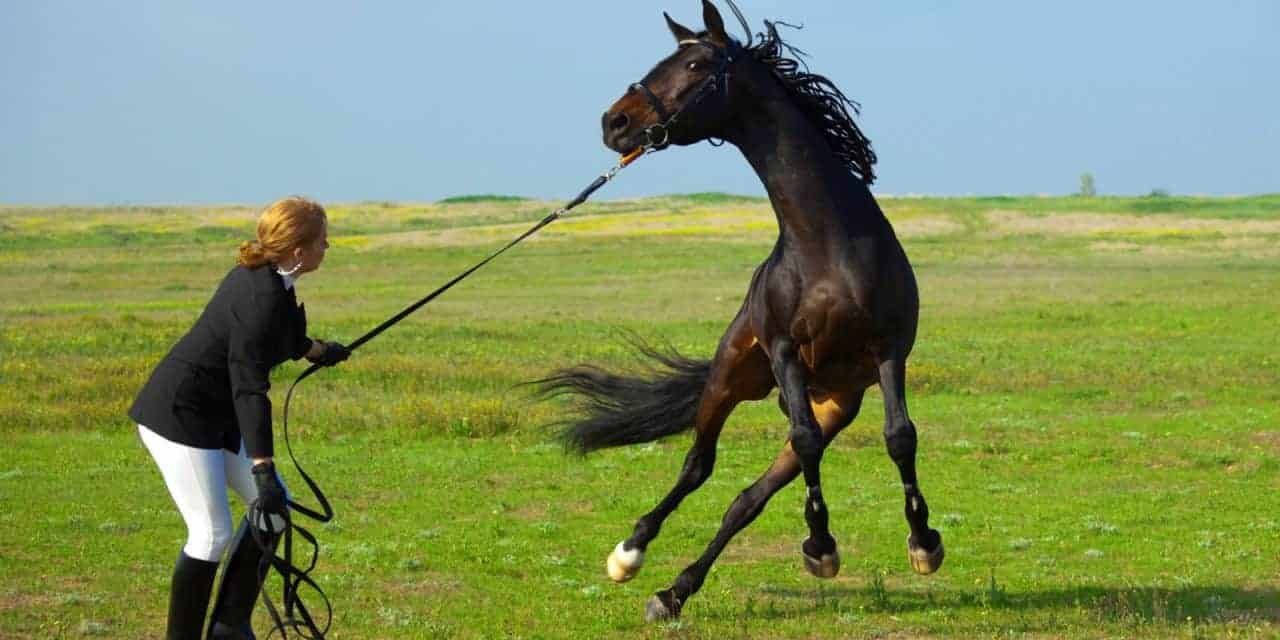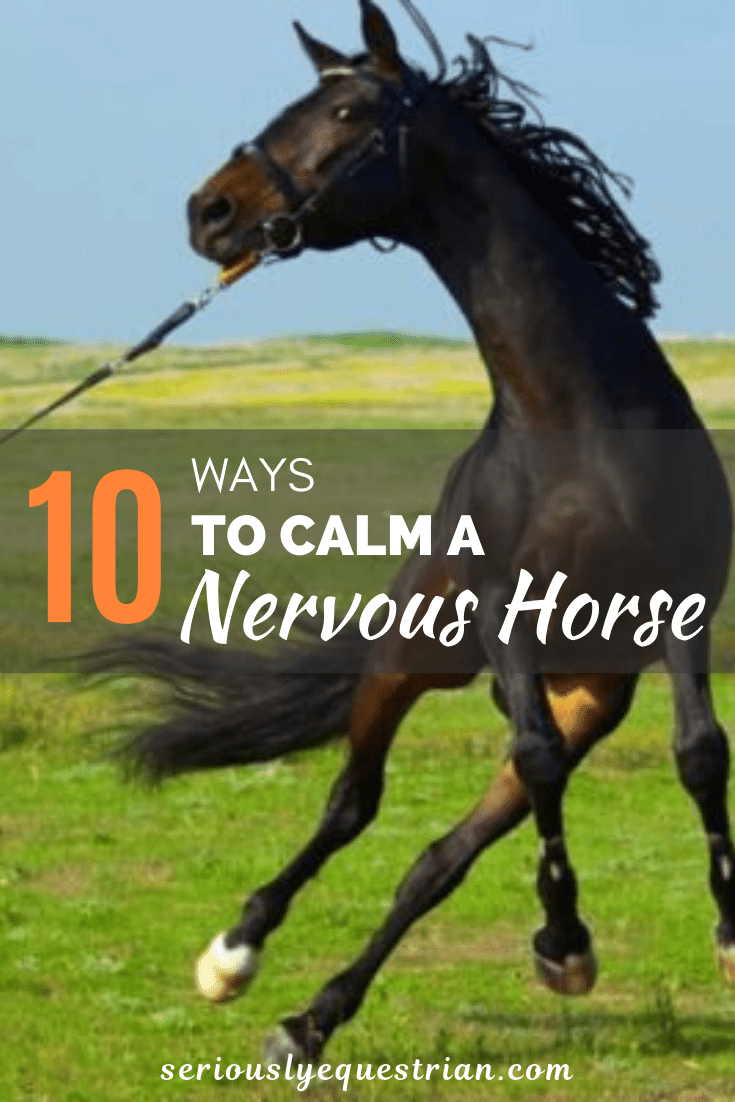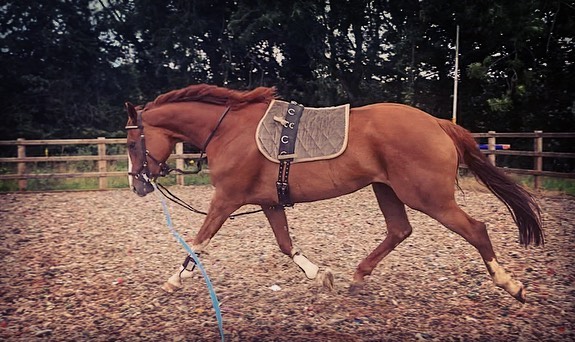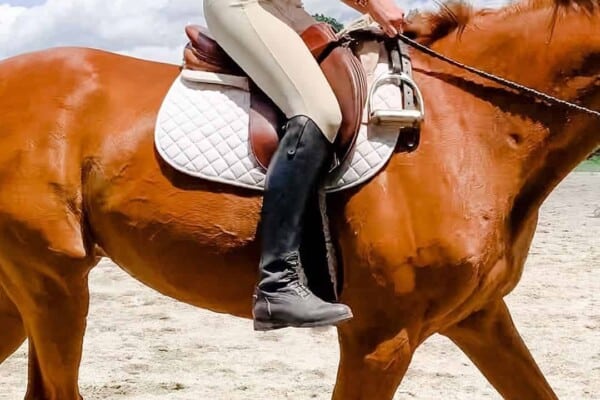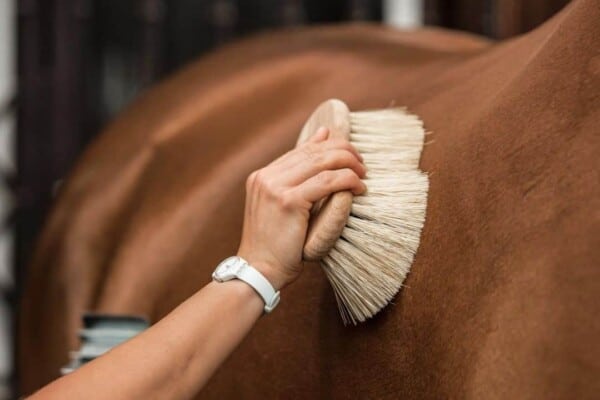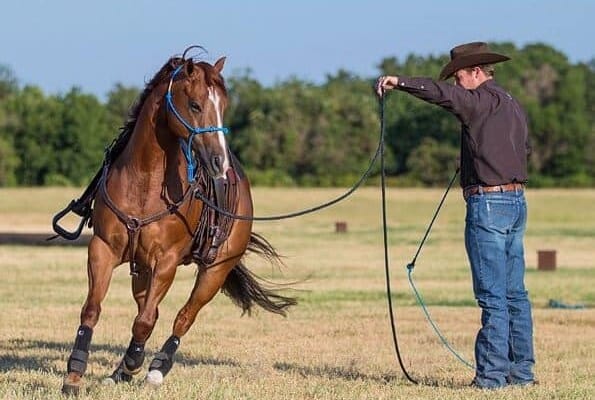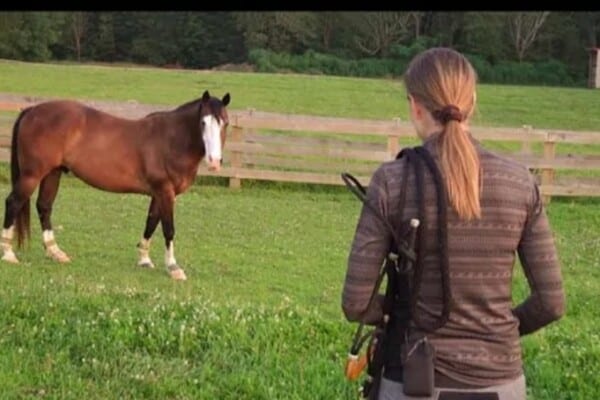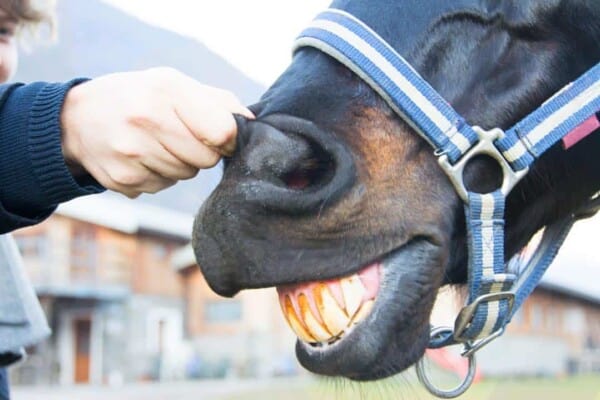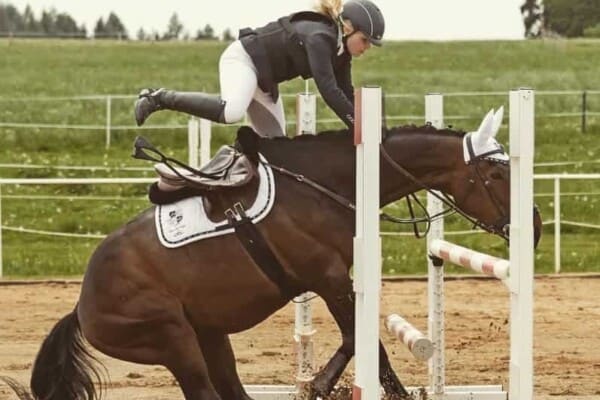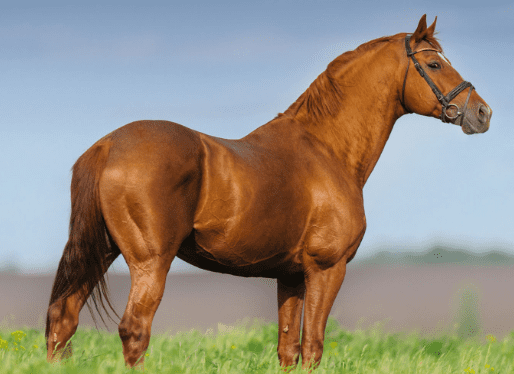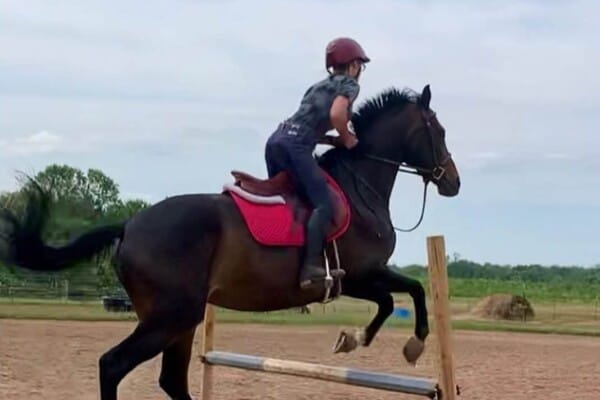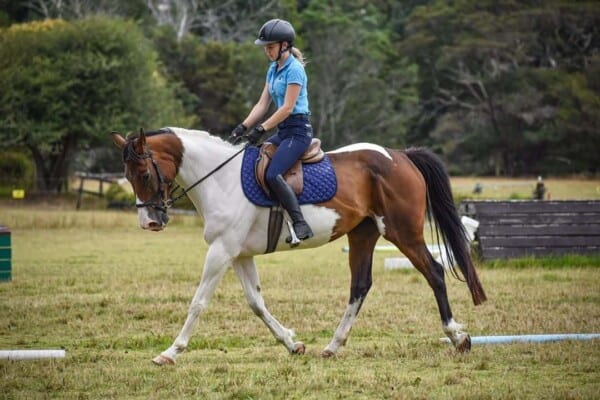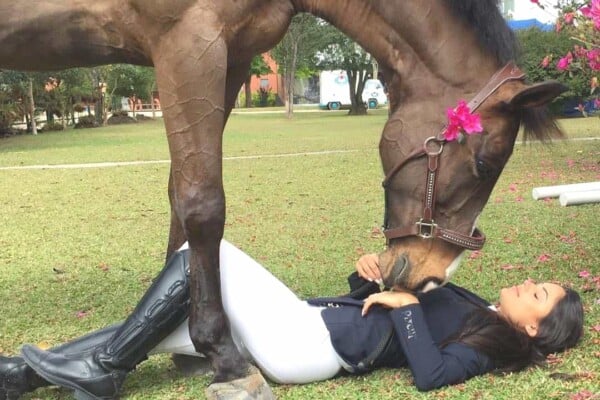Horses are flight animals and are therefore sensitive and constantly tuned to what they perceive as danger. Our perception of danger is not necessarily the same as theirs; some things trigger worry and fear in most horses but much of it is down to the individual character of a horse and his prior experiences.
Mostly, horses work well with people but sometimes, horses can become nervous and there are lots of reasons for this. A young or green horse may be encountering something new for the first time or an older horse may have a particular aversion to something due to a prior bad experience. Even the most established and well-handled horse can become nervous at times when faced with a difficult or unknown situation.
Different things make different horses nervous and most horse owners know what pushes their horse’s buttons. Some horses are worried about unfamiliar objects and even familiar objects in a strange location can cause concern. Certain situations can trigger anxiety such as being left on their own in the yard or clipping or loading onto a lorry or trailer. Some horses are worried by particular sounds whereas others take no notice. Some horses are frightened of other species of animals and even of other horses. Whatever triggers nerves in your horse, there are tried and trusted techniques to help soothe a nervous horse. Read our top tips below:
1. Use your voice – horses are incredibly responsive to the human voice and the tone of voice. A soft word either when the horse is in hand or under saddle can be really effective at reassuring an anxious horse in a difficult situation, on the road when a scary vehicle is approaching, in front of a jump which has a spooky filler underneath it, before loading as the horse hesitates at the bottom of the ramp. Be firm but do not become aggressive or shout.
2. Remove the cause – this is not always possible but can be a solution for anxiety and flight behavior in a horse. If you know your horse dislikes pigs, sometimes it can be better to avoid that field when out hacking on your own; a young or inexperienced horse can quickly become really frightened. Removing a cause does not have to be a permanent state of affairs. Perhaps you will ride past the pigs when you are in the company of an older, calmer horse so that the young horse can gain confidence from them and then ride past on another day when you are on your own. Sometimes it is easier to remove the cause on a temporary basis if this is a new horse you are working with and he hasn’t yet developed a secure and confident relationship with you.
3. Let him look – some horses will, given a chance, view a strange object and start to calm down, it depends on the situation. You do have to be sure that the horse isn’t using spooky behavior to gently move the goalposts; horses are very good at exploiting weaknesses in a rider and fear can quickly turn into naughtiness. For many horses, however, a chance to stand and stare with a reassuring pat is often all that is needed.
4. Sniff and touch – some horses are reassured by actually approaching and sniffing the object that is the cause of concern, it depends on what it is, how frightened your horse is and how brave he is prepared to be. If it is a flapping white bag in the hedge then you are probably on a hiding to nothing but a funny shaped log lying in the grass could, on closer examination, reveal itself not to be a horse eating dead body but just a log and the horse may be happy to investigate this before he moves on.
5. Encouragement not pressure – experienced riders really do just seem to know when to cajole and when to sit quietly. Inexperience in the rider or handler often causes a tense and excitable response with too much pressure being applied to the horse just at the wrong point, as he is trying to assess what the issue is that concerns him. Don’t be in a hurry to resolve the problem but hold your ground quietly and firmly, ultimately the horse will derive confidence from this response but not from a rider or handler who has become agitated and aggressive.
6. Look away – if your horse is worried by an object, look up, look ahead and don’t stare at it yourself. This indicates to the horse that you don’t acknowledge the object as fearful.
7. Use lateral work – riding slightly away from a fixed hazard such as something besides the arena and then moving towards it in leg yield or half pass is far more effective than trying to force the horse to confront it. The biggest challenge under saddle is usually the horse’s concentration focused away from the rider. If you can tune the horse back in and keep working then you can use the reassurance of the work and you the rider to close down a potentially explosive situation.
8. Dismount and lead – if you are in a mounted situation and there is no-one around on the ground to help you then you can dismount and lead the horse closer towards the object that is worrying him. Sometimes horses derive confidence from someone beside them.
9. Stay very calm – any anxiety in the handler will immediately transmit to the horse. It’s tricky when you know your horse is going to shy at something or become worried by it but if you feel overwhelmed in a situation, particularly if you are on the ground, then ask someone else to take over.
10. Hand the horse over – sometimes the owner is the worst person to manage a horse who is worried if they are becoming anxious themselves. Giving the horse to someone you know who is not emotionally connected but competent can have a very calming influence. The horse will react to a worried handler and this just increases tension as the person he normally looks to for stability and security cannot deliver. Asking someone to stand in is particularly useful in situations where you have to carry out a procedure with the horse such as loading or clipping and ultimately, is much safer for both parties.
All horses become fearful at some points but often these are just transient episodes. If you have a horse who is nervous or really frightened of a situation such as loading or clipping then you will need to take time and perhaps work with a professional to resolve these issues. You may never cure the horse completely of his fear but most horses improve when exposed to patient and consistent re-education.

